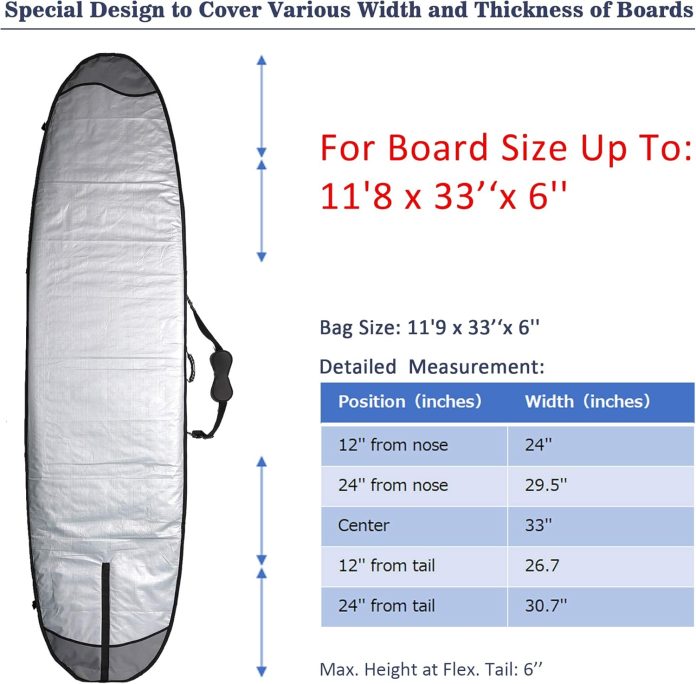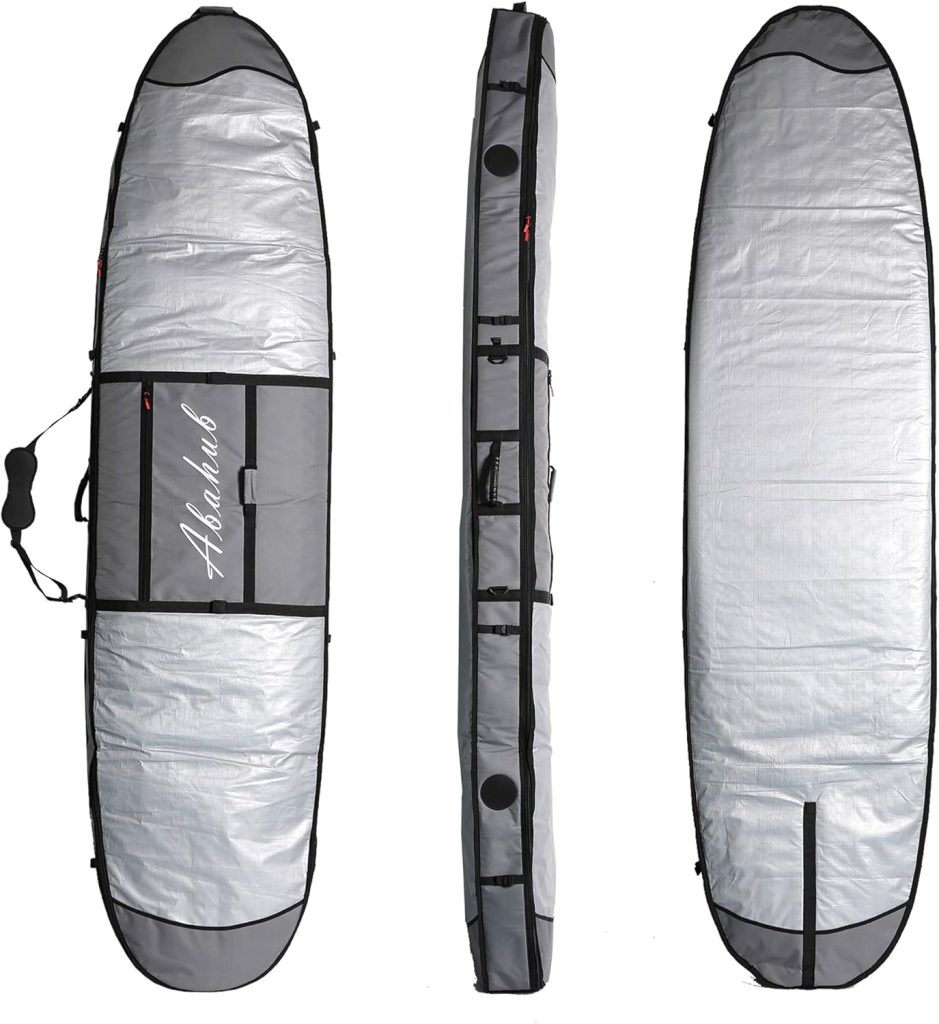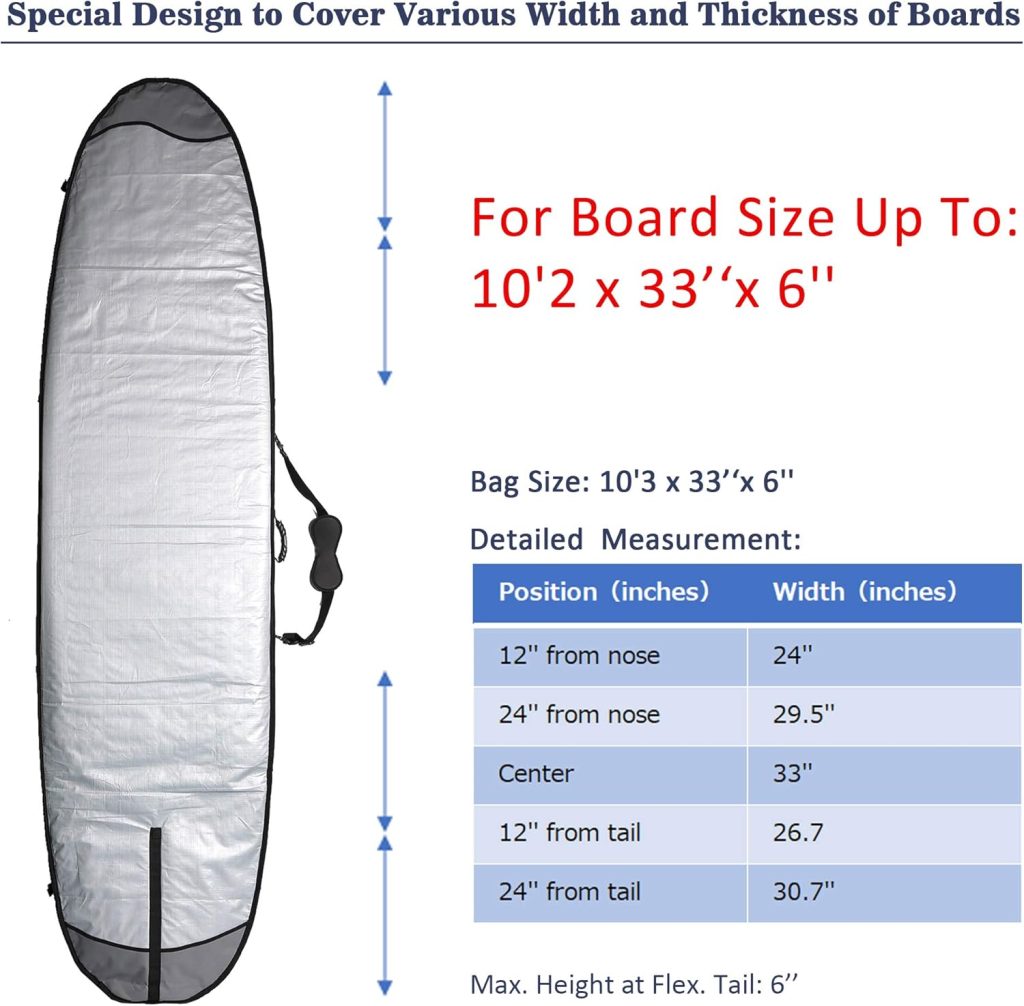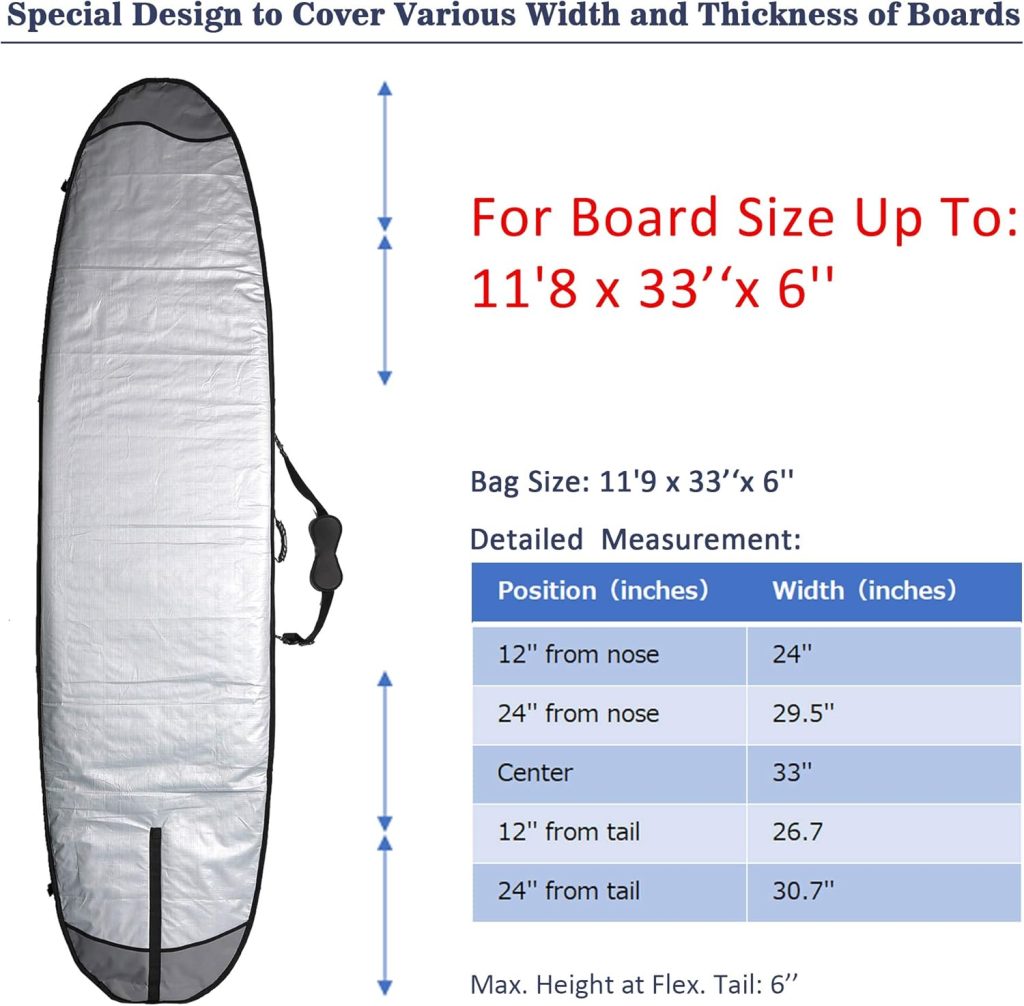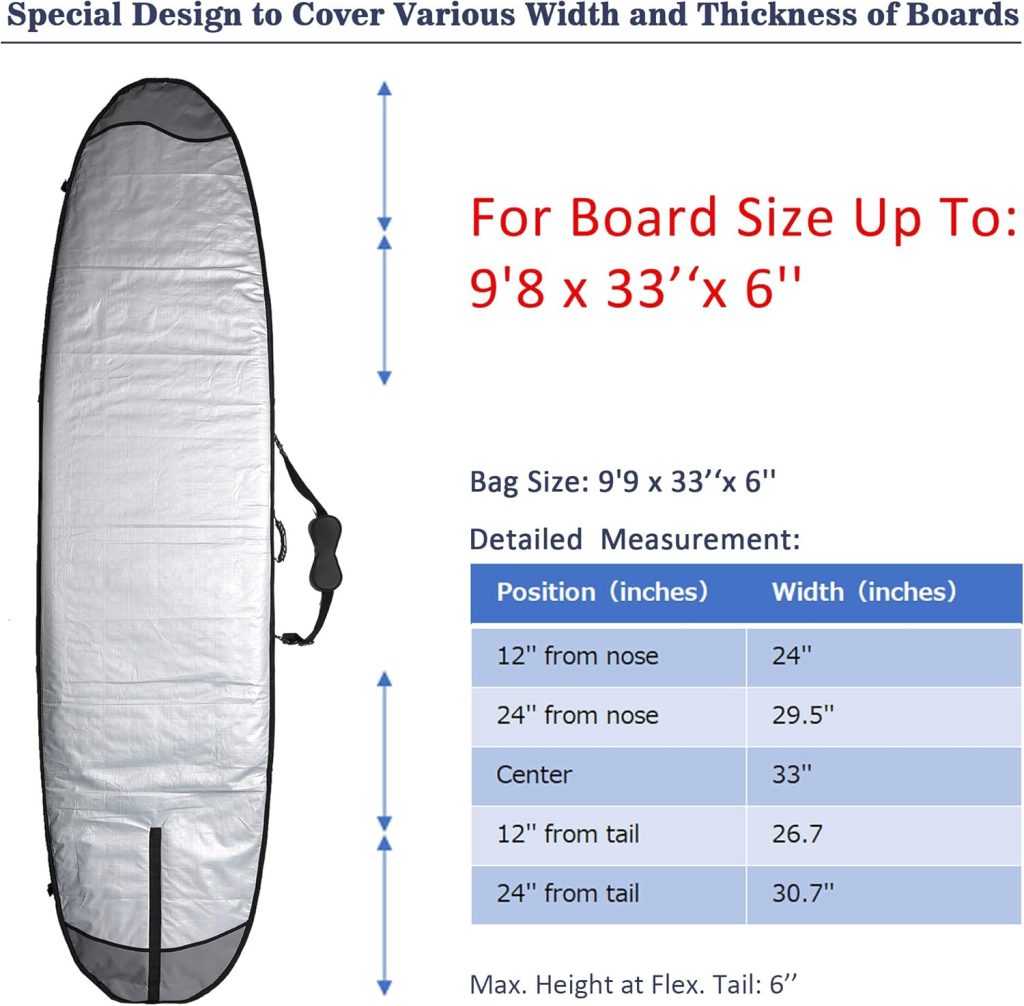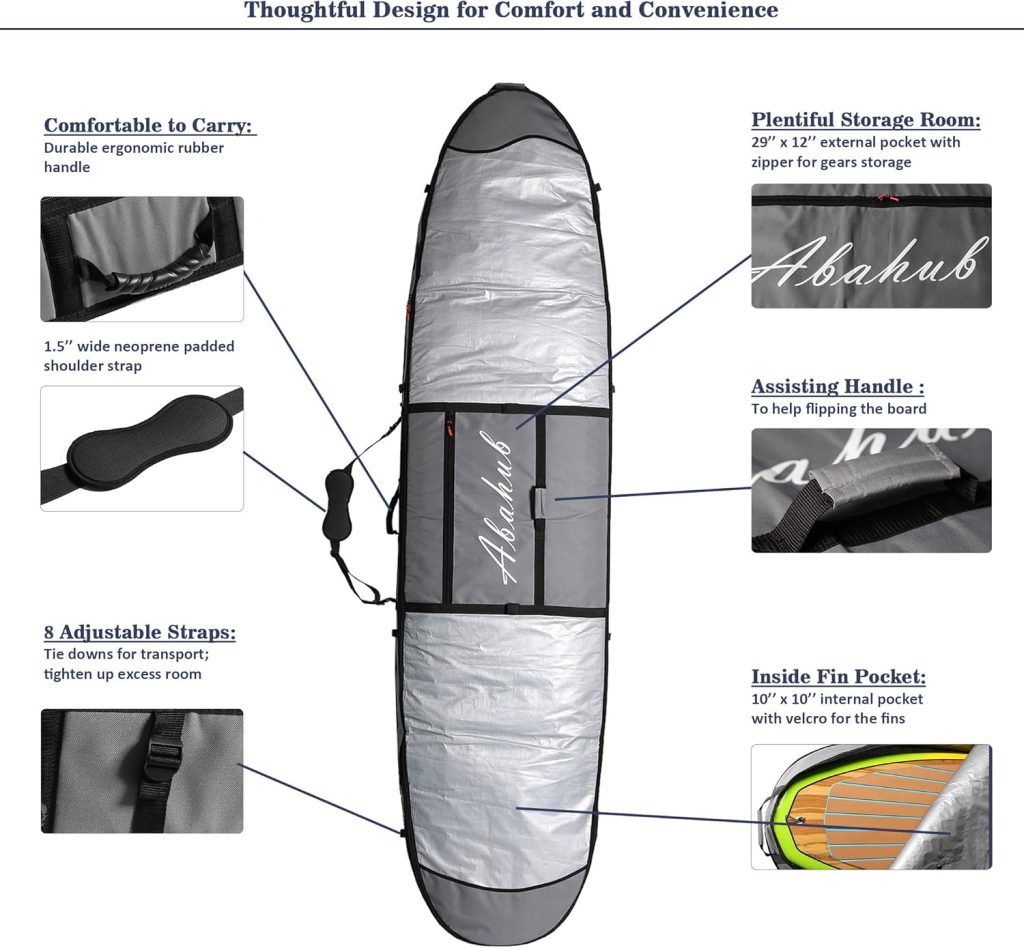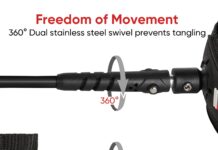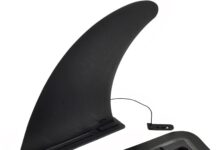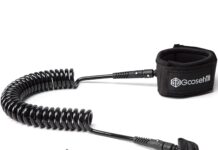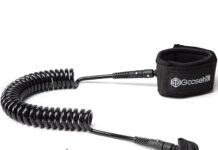Have we found a travel SUP bag that balances protection, portability, and practical features without breaking the bank?
Product Overview
We tested the Abahub Premium SUP Travel Bag, Foam Padded Stand-up Paddleboard Cover Case, Paddle Board Carrying Bags for Paddleboarding, Outdoor, Airplane, Car, Truck to understand how it performs for transporting and storing our hard SUPs. The bag is built from a water-resistant PE outer shell reinforced with 1680D material, a 1/3″ (8mm) foam core for impact cushioning, and a PE lining. YKK #10 nickel-plated zippers are used throughout, and the bag includes an external gear pocket, internal fin pocket, air vents, and a neoprene-padded shoulder strap. We’ll walk through what works, what doesn’t, and how to use it most effectively.
Abahub Premium SUP Travel Bag, Foam Padded Stand-up Paddleboard Cover Case, Paddle Board Carrying Bags for Paddleboarding, Outdoor, Airplane, Car, Truck
Key Features
We’ll summarize the important elements so we can reference them quickly while discussing performance and recommendations.
Materials and Build
The shell is a water-resistant PE material with reinforced 1680D nylon at the nose and tail, intended to resist abrasion and scuffs during handling. Inside, the bag has a PE lining and an 8mm foam core that cushions the board against knocks. The use of YKK #10 nickel-plated zippers signals higher-quality hardware compared to many budget bags.
Protection & Padding
The 1/3″ (8mm) foam core is meant primarily to protect against scratches and minor impacts. The reinforced 1680D panels at high-wear points (nose and tail) are a welcome addition for transport. The bag also includes four 4″ air vents to reduce heat build-up inside the case.
Size Coverage
This bag is designed to carry boards up to 12’0″ long, 33″ wide, and 6″ thick. That makes it suitable for most all-around and touring hard boards in the popular size ranges. We always recommend measuring the board with any accessories attached (fins removed or not) before buying to ensure proper fit.
Carrying System & Handles
A 2″ wide neoprene-padded adjustable shoulder strap brings comfort for single-shoulder carry. There’s an ergonomic plastic handle for short carries and an assisting handle that helps when flipping the board or using two people to move it. Stitching is doubled around stress points, and buckle hardware is described as upgraded for extra reliability.
Storage & Organization
A roomy external zippered pocket (29″ x 12″) allows us to stow paddles (in two-piece configurations), leashes, pumps, repair kits, and personal items. Inside, there’s a fin pocket secured with Hook and Loop fastening for safely stashing detachable fins during travel.
Zippers & Opening
The bag offers a 3/5 zipper opening around the perimeter, which means the zipper runs about three-fifths of the way around the bag to allow easier insertion and removal of the board. The YKK #10 nickel-plated zippers are substantial and should resist corrosion better than cheaper alternatives.
Ventilation
Four 4″ vents are included to allow heat to escape and reduce pressure build-up in hot environments, which is especially helpful if the bag warms up in cars or during transit.
Quick Specifications Table
We created this table to break down the main specs at a glance.
| Specification | Details |
|---|---|
| Product Name | Abahub Premium SUP Travel Bag, Foam Padded Stand-up Paddleboard Cover Case |
| Outer Material | Water-resistant PE shell with 1680D reinforcement |
| Inner Lining | PE lining |
| Foam Padding | 1/3″ (8mm) foam core |
| Zippers | YKK #10 nickel-plated |
| Max Board Size | Up to 12’0″ x 33″ x 6″ |
| External Pocket | 29″ x 12″ zippered pocket |
| Fin Pocket | Internal with Hook and Loop closure |
| Ventilation | 4 x 4″ air vents |
| Shoulder Strap | 2″ neoprene padded adjustable strap |
| Handles | Ergonomic plastic handle + assisting flip handle |
| Intended Storage | Indoor storage only (not for prolonged outdoor sun exposure) |
Packing and Handling
We tried the bag with several boards and found how it behaves during packing and handling matters as much as the spec sheet.
Preparing the Board
We recommend removing all detachable items (center fin and side fins where possible) before packing. A two-piece paddle and leash can be stowed in the external pocket, but if the paddle is rigid and long, we prefer placing it inside with the board or carrying separately. If the board has a fixed fin setup, confirm the max fin-base clearance fits within the bag dimensions.
Inserting the Board
Because the zipper opens around roughly three-fifths of the perimeter, the opening is wide enough for most boards, but wiggling boards into the bag can still take two people for long or wide boards. Use the assisting handle to hold the bag steady while sliding the board in. The foam core compresses a little during insertion, making it easier to seat the board centrally.
Securing Fins and Accessories
We used the internal Hook and Loop fin pocket to protect fins during transit. If fins are large or fixed, we recommend deferring to the bag’s max thickness rating—6″—and if necessary, remove fins and pack them inside the fin pocket or external pocket for safe transport.
Closing and Carrying
Once zipped, we used the neoprene-padded shoulder strap for comfortable shoulder carry, and the ergonomic plastic handle for short hauls from car to launch. The double-stitched seams and upgraded buckles give confidence when lifting or shifting heavier boards.
Performance During Travel
How the bag performs on the road or in the air is the real test for many of us who take SUPs on trips.
Airline Travel
For air travel, padding and durable zippers are essential. The 8mm foam padding is moderate—it provides protection from scuffs, minor knocks, and abrasions but is not designed to withstand aggressive baggage handling. We prefer to use this bag as a checked bag for boards where the airline typically handles surfboards with extra care or as part of a protective soft-case + hard-sleeve strategy. Always check airline rules for sporting equipment sizing and fees.
Tips for air travel:
- Remove fins and pack them inside the fin pocket or wrap them for extra protection.
- Consider additional padding at the nose and tail (e.g., foam blocks or bubble wrap) if expecting rough handling.
- Lock zippers with TSA-approved locks if desired.
Road Travel: Car & Truck
For car or truck transport, the bag performs very well. We used it on roof racks and inside trucks. The 1680D reinforcements at nose and tail help protect against rubbing and occasional impacts when loading or unloading. When strapped to a roof rack, we recommend additional tie-down points since the bag’s single shoulder strap and handles aren’t designed as permanent securing points.
Tips for road travel:
- Use cam straps and tie-downs through the board’s leash plug or dedicated tie-downs rather than relying on bag handles.
- Protect the board’s strap contact points with extra foam if straps cross the bag in a way that concentrates pressure.
Beach & Outdoor Use
The bag is water-resistant but not waterproof, and the manufacturer advises indoor storage only. We treated the bag as a transport and storage solution for our boards between sessions but avoided leaving it exposed to direct sunlight for prolonged periods. Sun exposure will substantially shorten the life of the bag’s materials and foam.
Practical beach advice:
- Avoid leaving the bag on hot sand or under direct sun for hours.
- Rinse salt off the board before packing to avoid corrosion or salt buildup inside the bag.
Durability and Longevity
We assessed construction quality and how the bag will stand up to repeated use.
Seams and Stitching
Double stitching at stress points provides reassurances that handles and straps won’t fail quickly. Over time and with heavy use, areas that frequently bear load—especially the shoulder strap anchor points—can be single points of failure on most bags; the reinforced stitching here reduces that risk.
Zippers and Hardware
YKK zippers are a major plus. They feel solid and are less prone to catching or separating than cheaper alternatives. The nickel plating should resist corrosion better, which matters if we’re dealing with salty environments.
Foam and Material Degradation
The 8mm foam padding is sufficient for everyday transport but is thin compared to heavily padded cases. If we expect repeated rough handling (e.g., frequent airline travel with heavy turnover), we would consider adding extra padding to nose and tail or upgrading to a thicker foam bag. The PE shell and 1680D reinforcements are robust, but the manufacturer’s indoor storage recommendation is important: prolonged UV exposure will accelerate degradation.
Maintenance and Cleaning
We always want to keep gear performing well; here are practical steps we used to extend the bag’s life.
- Rinse the bag with fresh water after use in saltwater environments, focusing on zippers and the inside of pockets.
- Use a mild soap solution for stubborn dirt; avoid harsh detergents that could degrade water-resistant coatings.
- Allow the bag to dry completely before storing it indoors to prevent mildew. Open the zippers and vents to improve airflow while drying.
- Store the bag in a cool, dry place away from direct sunlight. The manufacturer explicitly states indoor storage only—leaving the bag outdoors in sun will substantially shorten its lifespan.
- For small tears or seam issues, use UV-resistant fabric repair tape or a patch kit for 1680D-type fabrics for temporary fixes; professional repair is best for major seam failures.
Pros and Cons
We summarized our main findings to help decide quickly whether this bag suits your needs.
Pros
- Solid materials (water-resistant PE, 1680D reinforcement).
- YKK #10 nickel-plated zippers for reliable performance.
- Comfortable neoprene-padded shoulder strap and multiple handles for easier carrying.
- Large external pocket for gear and internal fin pocket for safe fin storage.
- Ventilation to reduce heat build-up, which helps boards and accessories.
- Size coverage up to 12’0″ x 33″ x 6″ to fit most hard SUPs.
Cons
- Foam padding (8mm) is moderate; we’d add extra padding for heavy airline handling.
- Intended for indoor storage only—outdoor sun exposure will shorten the bag’s life.
- 3/5 zipper opening isn’t a full 360-degree access, so board insertion can be fiddly for very wide boards.
- Not fully waterproof—protects from splashes but won’t prevent water ingress in heavy rain.
Comparison to Similar Bags
We compared the Abahub Premium bag to typical soft-shell SUP travel bags on the market and highlight how it stacks up.
- Versus basic soft bags: Abahub’s 1680D reinforcements and YKK zippers are a clear upgrade; padding is similar or slightly better.
- Versus high-end travel bags: High-end bags often offer thicker padding (10–20mm or more), extra nose/tail caps, and internal straps. Abahub hits a middle ground between economy and premium.
- Versus hard cases: A hard case still offers the most protection for aggressive airline handling, but the Abahub bag is lighter, easier to store, and more affordable.
Who This Bag Is For
We think this bag best suits:
- Weekend warriors who drive to launches or transport boards on roof racks.
- Casual travelers who check boards on flights occasionally and add extra padding themselves.
- Paddlers who need an affordable protective bag with good organizational features (large external pocket, fin pocket).
- Anyone with a board under 12’0″ x 33″ x 6″ looking for a durable soft case for indoor storage.
We would not recommend this bag as the sole protection for heavy frequent flyers who expect rough airline baggage handling without adding extra cushioning or a hard case.
Practical Tips and Best Practices
We compiled a set of actions we take to maximize the bag’s performance and lifespan.
- Always measure board length, width, and thickness before purchasing to confirm compatibility.
- Remove fins for travel, pack them in the internal fin pocket, and pad them to avoid internal punctures.
- Add extra foam to the nose and tail for airline trips. Small foam wedges or bubble wrap work well.
- Use a soft cam strap through the board’s leash plug or other reinforcement points to secure the board on roof racks rather than relying on bag handles.
- Rinse board and bag after saltwater exposure, dry thoroughly before storing.
- Store indoors and out of direct sunlight—UV will degrade the materials.
- Keep zipper teeth clean and occasionally lubricate lightly with zipper wax or silicone to prevent catching.
Our Rating Breakdown
We assessed the bag across the main categories we care about, using a five-star scale.
- Protection (padding, reinforcements): 4/5 — Good protection for general use but not maximum airline-proof thickness.
- Build quality (zippers, stitching, materials): 4.5/5 — Quality components like YKK zippers and double stitching.
- Portability (weight, straps, handles): 4.5/5 — Comfortable shoulder strap and assist handle make carrying easy.
- Storage/Organization (pockets, fin pocket): 4.5/5 — Large external pocket and internal fin pocket are very practical.
- Value for money: 4.5/5 — Strong value for what it offers compared with many soft cases.
Overall: 4.4/5 — A solid soft travel bag that balances price and performance for most paddlers.
Common Questions We Answered
We anticipate some questions readers usually have and address them based on our experience.
Q: Can this bag handle a board with a fixed center fin? A: The bag accepts boards up to 6″ thickness. If the fin is fixed and increases the total thickness beyond 6″, the board won’t fit properly. We recommend removing a fixed fin where possible or choosing a different bag rated higher for thickness.
Q: Is the bag waterproof? A: No. The shell is water-resistant but not fully waterproof. It protects from splashes and light rain but not from immersion or heavy downpours. Don’t leave it in heavy rain or submerged.
Q: Can we use it for outdoor storage long-term? A: No. The manufacturer specifies indoor storage only. Prolonged sun exposure will significantly shorten the bag’s lifespan.
Q: Are the zippers lockable for airline travel? A: The YKK zippers can accept small locks on their pulls. We recommend TSA-approved locks for checked luggage when flying.
Final Verdict
We like the Abahub Premium SUP Travel Bag for its thoughtful balance of materials, functional features, and price. The reinforced 1680D panels, YKK zippers, large external pocket, and comfortable carrying system make it an excellent option for paddlers who need dependable protection and good organization for road trips, beach sessions, and occasional flights.
However, for frequent flyers or those expecting extremely rough airline handling, we recommend adding extra nose/tail padding or considering a thicker-padded or hard-case solution. Also, heed the indoor storage warning—keeping the bag out of the sun will maximize its lifespan.
If we had to summarize our recommendation: choose this bag if you want a reliable, reasonably protective soft case with high-quality hardware and practical features, but plan for added padding or a hard case if you routinely face heavy-duty baggage handling.
Buyer’s Checklist
Before purchasing, we suggest running through this quick checklist to make sure the bag will work for us:
- Measure board length, width, and thickness (including any permanent fins).
- Decide whether the bag will be used primarily for road travel, occasional flights, or heavy airline use.
- Plan to remove fins and add padding for airline travel if necessary.
- Ensure indoor storage is available to comply with the bag’s longevity recommendations.
- Consider extra accessories: fin wraps, foam nose/tail protectors, and TSA locks.
We hope this detailed review helps us make a confident decision about the Abahub Premium SUP Travel Bag, Foam Padded Stand-up Paddleboard Cover Case, Paddle Board Carrying Bags for Paddleboarding, Outdoor, Airplane, Car, Truck. If we have more specific questions—like fitting a particular board model—we can compare dimensions together and recommend exact packing strategies.
Disclosure: As an Amazon Associate, I earn from qualifying purchases.

